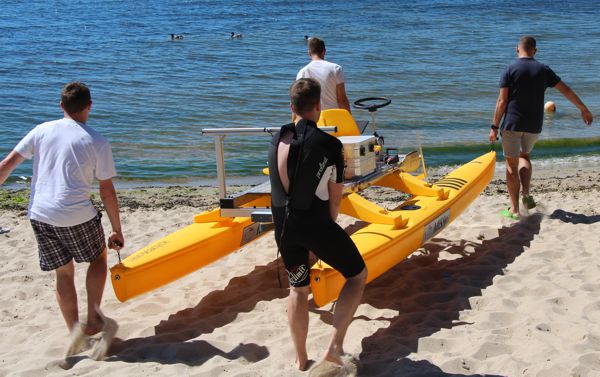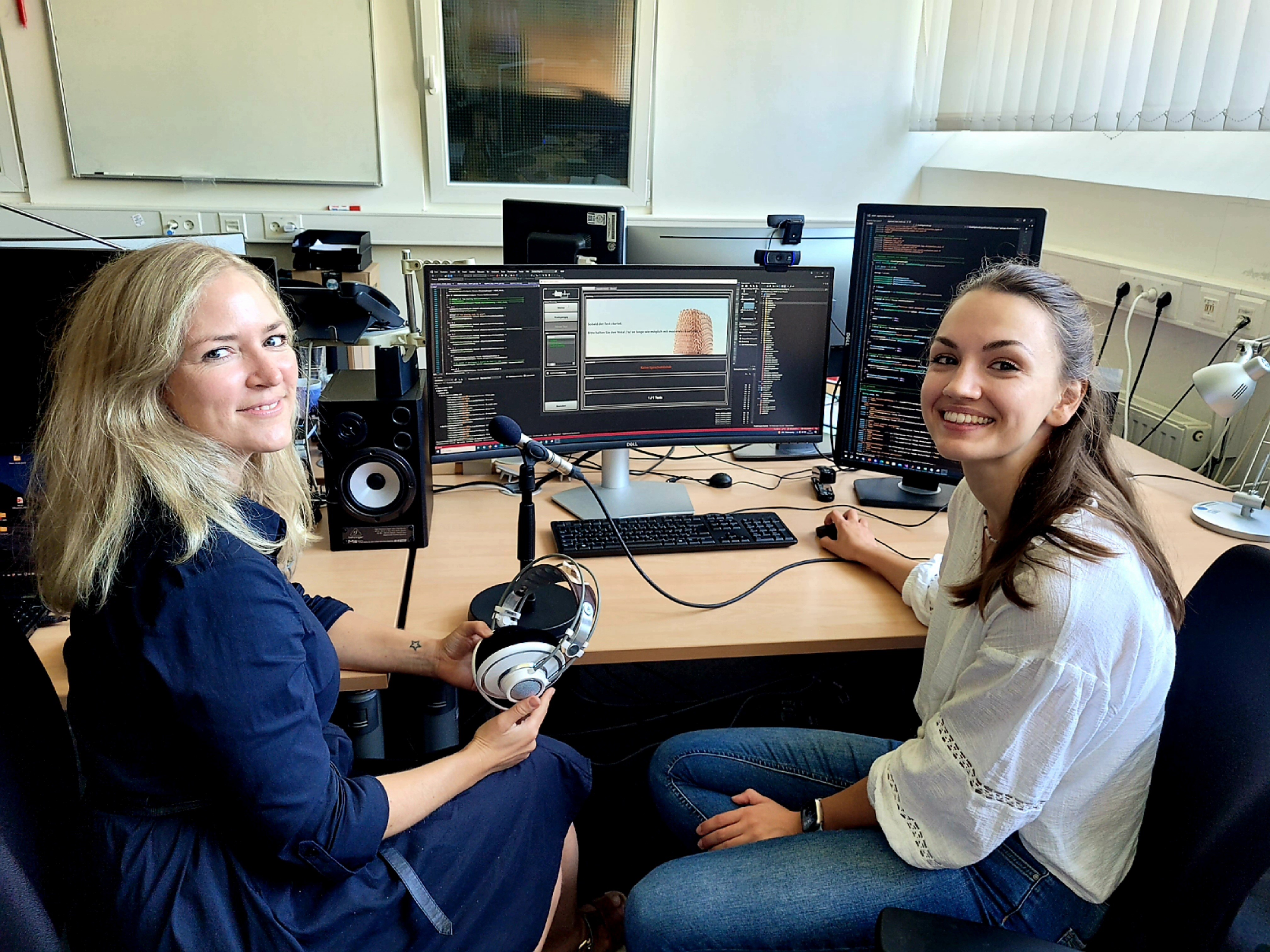Real-time Simulation of Underwater Channels
 |
||
| Contents: | ||
Todays research interests in underwater communication and navigation are continuously growing. However, testing of new systems involves a lot of effort and costs. Due to this fact it is often useful to develop a complex simulation environment. The first aspect of the underwater channel simulation is closely related to the questions:
- What happens with an acoustic signal if it propagates through the water?
- And what kind of transformations are resulting from this?
Under water, there are a variety of effects which are influencing the propagation of the sound waves. Our framework performs the real-time simulation of underwater signals for SONAR signal processing. The main focus lies in the implementation of an adaptive ray tracing method, which allows the simulation of time-varying multi-path propagation under the influence of a given sound velocity profile and other environmental properties such as the structure of the sea bottom or the sea surface. Another feature of the simulation is the generation of spatially coherent noise signals with application to ambient sea noise in case of a multiple receiver system. Two special features of the simulation are the calculation of a time- and wind-dependent sea surface, as well as a possibility of using different sediment types and user-defined bottom surfaces. Another special feature of the simulation environment is the hardware simulation, which allows the use of hardwarespecific transmission functions like sensitivity curves of projectors and hydrophones.
The video shows the application of KiRAT for SONAR applications. Several send and receive hydrophones can be placed in an underwater environement with adjustment possibilities, such as sound velocity profiles (depth dependent). In addition, wind speed and direction can be adjusted (both is fed into a statical model for creating a time and location dependent water surface and corresponding noise). Furthermore, several moving target can be simulated. The channel simulation is based on a restricted 3D ray tracing scheme, that allows freqeuency dependant ray parameters (e.g. reflection and attenuation).
Corresponding Publications:
A. Namenas, T. Kaak, and G. Schmidt: Real-time Simulation of Underwarter Acoustic Channels, Proc. DAGA, Kiel, Germany, open access, 2017

 In the first week of September, we were delighted to host Dr.
In the first week of September, we were delighted to host Dr.